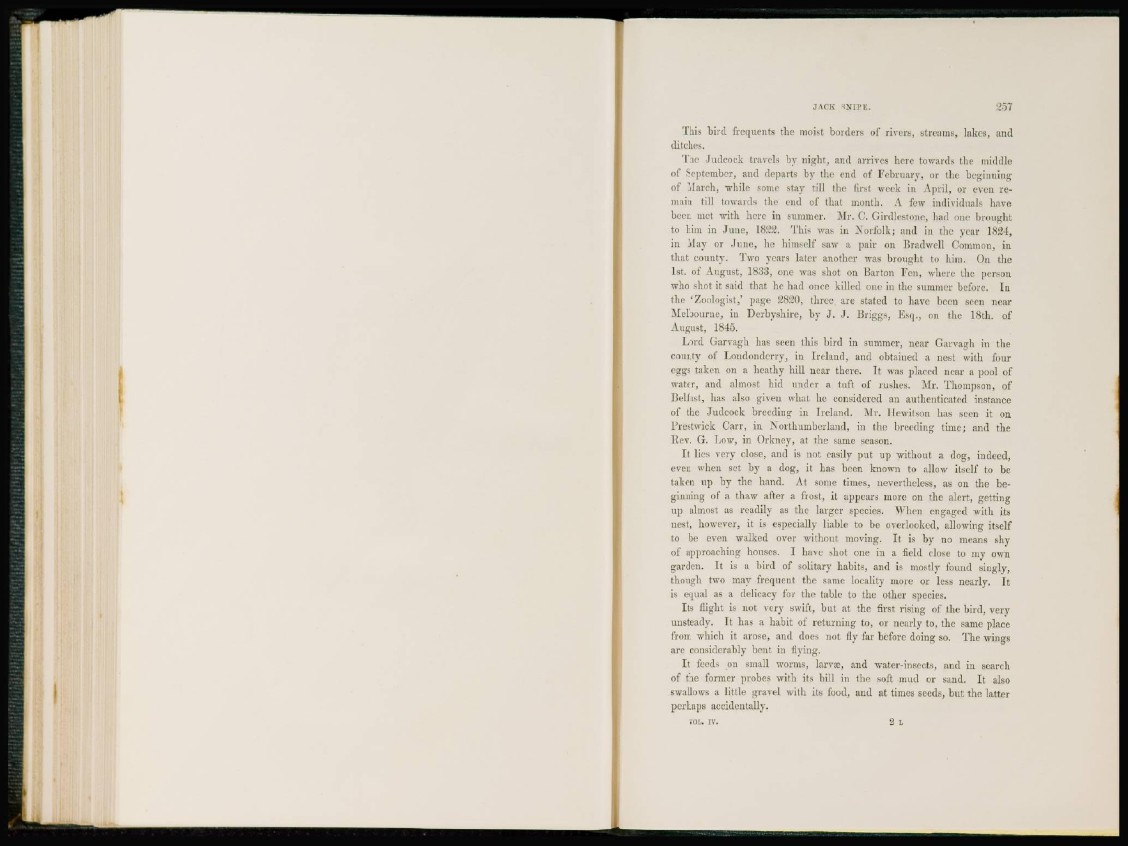
This bird frequents the moist borders of rivers, streams, lakes, and
ditches.
The Judcock travels by night, and arrives here towards the middle
of September, and departs by the end of February, or the beginning
of March, while some stay till the first week in April, or even remain
till towards the end of that month. A few individuals have
been met with here in summer. Mr. 0 . Girdlestone, had one brought
to him in June, 1822. This was in Norfolk; and in the year 1824,
in .May or June, he himself saw a pair on Bradwell Common, in
that county. Two years later another was brought to him. On the
1st. of August, 1833, one was shot on Barton Fen, where the person
who shot it said that he had once killed one in the summer before. In
the 'Zoologist,' page 2820, three arc stated to have been seen near
Melbourne, in Derbyshire, by J. J. Briggs, Esq., on the 18th. of
August, 1845.
Lord Oarvagh has seen this bird in summer, near Garvagh in the
county of Londonderry, in Ireland, and obtained a nest with four
eggs taken on a heathy bill near there. It was placed near a pool of
water, and almost hid under a tuft of rushes. Mr. Thompson, of
Belfast, has also given what he considered an authenticated instance
of the Judcock breeding in Ireland. Air. I lewitson has seen it on
Brestwick Carr, in Northumberland, in the breeding time; and the
Bev. G. Low, in Orkney, at the same season.
I t lies very close, and is not easily put up without a dog, indeed,
even when set by a dog, it has been known to allow itself to be
taken up by the hand. At some times, nevertheless, as on the beginning
of a thaw after a frost, it appears more on the alert, getting
up almost as readily as the larger species. When engaged with its
nest, however, it is especially liable to be overlooked, allowing itself
to be even walked over without moving. It is by no means shy
of approaching houses. I have shot one in a field close to my own
garden. It is a bird of solitary habits, and is mostly found singly,
though two may frequent the same locality more or less nearly. It
is equal as a delicacy for the table to the other species.
Its flight is not very swift, but at the first rising of the bird, very
unsteady. It has a habit of returning to, or nearly to, the same place
from which it arose, and does not fly far before doing so. The wings
are considerably bent in flying.
I t feeds on small worms, larvae, and water-insects, and in search
of the former probes with its bill in the soft mud or sand. It also
swallows a little gravel with its food, and at times seeds, but the latter
perhaps accidentally.